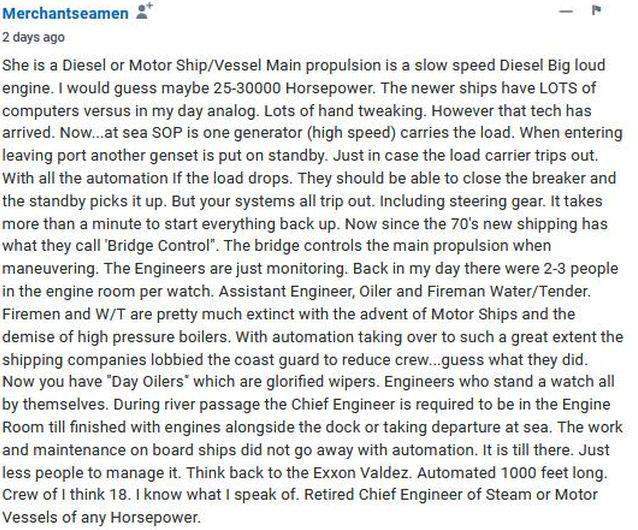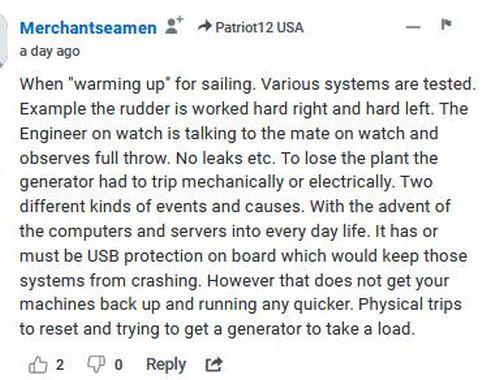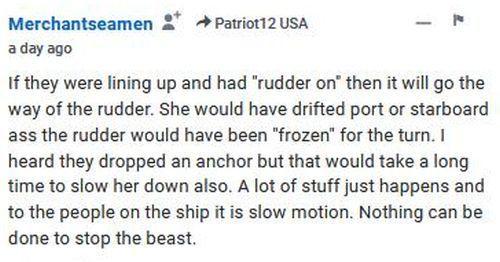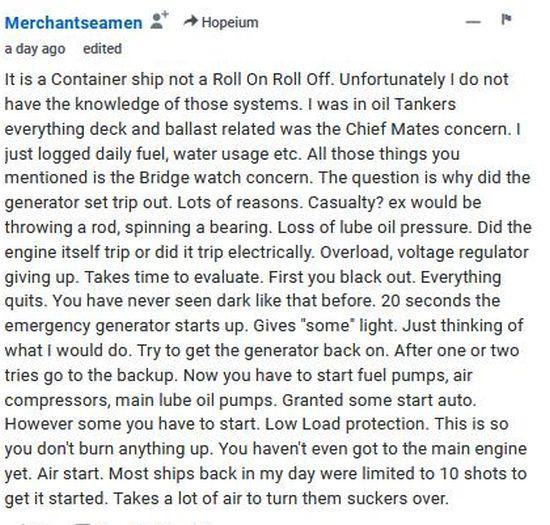Go long concrete, this may rewrite a few regulationsActually a requirement for a long time to build protective embankments around the base. No requirement to retrofit
Colleges
- AAC
- ACC
- Big 12
- Big East
- Big Ten
- Pac-12
- SEC
- Atlantic 10
- Conference USA
- Independents
- Junior College
- Mountain West
- Sun Belt
- MAC
- More
- Navy
- UAB
- Tulsa
- UTSA
- Charlotte
- Florida Atlantic
- Temple
- Rice
- East Carolina
- USF
- SMU
- North Texas
- Tulane
- Memphis
- Miami
- Louisville
- Virginia
- Syracuse
- Wake Forest
- Duke
- Boston College
- Virginia Tech
- Georgia Tech
- Pittsburgh
- North Carolina
- North Carolina State
- Clemson
- Florida State
- Cincinnati
- BYU
- Houston
- Iowa State
- Kansas State
- Kansas
- Texas
- Oklahoma State
- TCU
- Texas Tech
- Baylor
- Oklahoma
- UCF
- West Virginia
- Wisconsin
- Penn State
- Ohio State
- Purdue
- Minnesota
- Iowa
- Nebraska
- Illinois
- Indiana
- Rutgers
- Michigan State
- Maryland
- Michigan
- Northwestern
- Arizona State
- Oregon State
- UCLA
- Colorado
- Stanford
- Oregon
- Arizona
- California
- Washington
- USC
- Utah
- Washington State
- Texas A&M
- Auburn
- Mississippi State
- Kentucky
- South Carolina
- Arkansas
- Florida
- Missouri
- Ole Miss
- Alabama
- LSU
- Georgia
- Vanderbilt
- Tennessee
- Louisiana Tech
- New Mexico State
- Middle Tennessee
- Western Kentucky
- UTEP
- Florida International University
High School
- West
- Midwest
- Northeast
- Southeast
- Other
- Alaska
- Arizona
- California
- Colorado
- Nevada
- New Mexico
- Northern California
- Oregon
- Southern California Preps
- Washington
- Edgy Tim
- Indiana
- Kansas
- Nebraska
- Iowa
- Michigan
- Minnesota
- Missouri
- Oklahoma Varsity
- Texas Basketball
- Texas
- Wisconsin
- Delaware
- Maryland
- New Jersey Basketball
- New Jersey
- New York City Basketball
- Ohio
- Pennsylvania
- Greater Cincinnati
- Virginia
- West Virginia Preps
ADVERTISEMENT
Install the app
How to install the app on iOS
Follow along with the video below to see how to install our site as a web app on your home screen.
Note: This feature may not be available in some browsers.
You are using an out of date browser. It may not display this or other websites correctly.
You should upgrade or use an alternative browser.
You should upgrade or use an alternative browser.
OT: I-695 Francis Scott Key Bridge Collapses
- Thread starter Joey Bags
- Start date
Just take this to the current events board, also known as the worst place on earth.Its as relevant as FBI saying for months that infrastructure was in danger of being hacked.
You're just missing a gear.
"I get a lot of objections from ships captains when discussing security flaws in ships, so I felt it worthwhile looking at these in some detail.
The usual response is ‘ships can’t be hacked.’ When I dig further, what they usually seem to mean is that ‘processes aboard the bridge mean that the captain or officers will spot the issue and take manual control’
This implies several important issues:
I’ve been working in IT security for over 20 years. I see the same pattern when security flaws are discovered in an industry for the first time. Back the early 2000’s, few industries outside financial services and government took security seriously. ‘Why would hackers be interested in us’ was the usual objection."
- That the hack is detectable by a ships crew.
- That the crew are actively comparing digital navigation aids with manual navigation techniques (e.g. looking out of the bridge windows!)
- That the manual controls are actually usable and haven’t been hacked themselves
- That there are offline backup systems in the event that primary aids aren’t available (e.g. paper charts)
- That anyone actually checked the digital systems are reporting correctly
Ships can’t be hacked. Wrong | Pen Test Partners
I get a lot of objections from ships captains when discussing security flaws in ships, so I felt it worthwhile looking at these in some detail. The usual response is ‘ships can’t be hacked.’ When I dig further, what they usually seem to mean is that ‘processes aboard the bridge mean that the captain orwww.pentestpartners.com
70% of coal export goes through Baltimore - and its got the greatest volume of auto-shipping.
Very strategic
Only for the psycho-emotionally constipated.Just take this to the current events board, also known as the worst place on earth.
Functional adult males suffer not at all
What's the significance of them losing power, regaining it and losing it again?
I don't believe that there is any terrorism link as they don't want to commit these acts in the dead of night but in the daytime (preferably rush hour) when they can get the maximum amount of casualties.
I don't believe that there is any terrorism link as they don't want to commit these acts in the dead of night but in the daytime (preferably rush hour) when they can get the maximum amount of casualties.
Jack Ruby and JFK Jr. were seen on that container ship prior to the collision.
So you’re saying that you don’t believe that a sophisticated terrorist would rely on river currents to carry a barge to the right place to take down a bridge at an hour that would cause the least human casualties?What's the significance of them losing power, regaining it and losing it again?
I don't believe that there is any terrorism link as they don't want to commit these acts in the dead of night but in the daytime (preferably rush hour) when they can get the maximum amount of casualties.
I'm not saying it is or isn't terrorism, I'll leave that to the experts but does every act of terrorism need to be sophisticated/well planned? Could it not just be one/a few extremists on the ship?So you’re saying that you don’t believe that a sophisticated terrorist would rely on river currents to carry a barge to the right place to take down a bridge at an hour that would cause the least human casualties?
What's the significance of them losing power, regaining it and losing it again?
I don't believe that there is any terrorism link as they don't want to commit these acts in the dead of night but in the daytime (preferably rush hour) when they can get the maximum amount of casualties.
It would actually be much more impactful. Killing a bunch of random people tends to backfire as it rallies people against a common enemy. Taking out a major port does a lot of more damage to your target.
If it's found to be a deliberate act, it's war, not terrorism.
It could be, but would require the local harbor pilots to be in on it. Just cutting the power on the ship doesn't give you a high probability of hitting something that actually matters.I'm not saying it is or isn't terrorism, I'll leave that to the experts but does every act of terrorism need to be sophisticated/well planned? Could it not just be one/a few extremists on the ship?
And if you are going to do something like cut the power, why not start a fire/sink the ship or better yet, don't do it to a containership, start a fire on a tanker or some other ship with large volumes of hazardous/volatile cargo.
There is a non-zero chance this was deliberate, but in my opinion the odds are really low.
Don't disagree with anything you've stated. I'm just of the opinion that every guy with bad intentions isn't necessarily an evil genius.It could be, but would require the local harbor pilots to be in on it. Just cutting the power on the ship doesn't give you a high probability of hitting something that actually matters.
And if you are going to do something like cut the power, why not start a fire/sink the ship or better yet, don't do it to a containership, start a fire on a tanker or some other ship with large volumes of hazardous/volatile cargo.
There is a non-zero chance this was deliberate, but in my opinion the odds are really low.
So you’re saying that you don’t believe that a sophisticated terrorist would rely on river currents to carry a barge to the right place to take down a bridge at an hour that would cause the least human casualties?
Relying on river currents would be an imprecise way to do this. The amount of resources to pull this off and have it all hinge upon getting lucky with the right river current, weather pattern, etc. seems a bit much.
The amount of things that would have to go right for them to rely on the current to push them directly into the piling of the bridge is pretty large.
For example, in the video I linked, the merchant marine looking at the GPS data states that Dali is in the shipping lane but not the dead center of the shipping lane, she's off to the left a bit which is fine. Well, if the tugs has pushed her say to the right of center of the shipping lane, the current very well could have pushed her too far to the right and missed the piling of the bridge.
Then you'd have to anticipate the pilot's reaction. What if he doesn't drop an anchor? That could change the trajectory of the ship.
Last edited:
Better to be lucky than good?Don't disagree with anything you've stated. I'm just of the opinion that every guy with bad intentions isn't necessarily an evil genius.
Here is a good synopsis:What's the significance of them losing power, regaining it and losing it again?
I don't believe that there is any terrorism link as they don't want to commit these acts in the dead of night but in the daytime (preferably rush hour) when they can get the maximum amount of casualties.
What's the significance of them losing power, regaining it and losing it again?
I don't believe that there is any terrorism link as they don't want to commit these acts in the dead of night but in the daytime (preferably rush hour) when they can get the maximum amount of casualties.
Listening to other people working in the field, the ship was going too fast, and if they used "tunnel thrusters" full on that can cause a power glitch - but - all ships have redundancy and losing power doesn't cause loss of steering. If the ship uses the smaller propulsion system full on - in conjunction with dropped anchor - for reverse that can alter ships direction. People were also mentioning the absence of tugs - which from what I gathered the gov let tugs get reduced by 40%.
The port is a major military port since it had handle heavy items
There is a non-zero chance this was deliberate, but in my opinion the odds are really low.
You've made conspiracy theorists very happy!
I was just trying to be nice......You've made conspiracy theorists very happy!

Listening to other people working in the field, the ship was going too fast, and if they used "tunnel thrusters" full on that can cause a power glitch - but - all ships have redundancy and losing power doesn't cause loss of steering. If the ship uses the smaller propulsion system full on - in conjunction with dropped anchor - for reverse that can alter ships direction. People were also mentioning the absence of tugs - which from what I gathered the gov let tugs get reduced by 40%
Tugs don't typically guide ships down the channel in Baltimore. They push the ships back, help them maneuver in the harbor and get them into the channel. But there are some industry experts now calling for longer tug engagements given this event.
How did the government let tugs get reduced by 40%? And what do you mean by Baltimore being a major military port?
Last edited:
AND the Easter Bunny.Jack Ruby and JFK Jr. were seen on that container ship prior to the collision.
Seems very odd that there were not any large bumpers / fenders placed around the main support piers. These are basically small artificial islands placed in the water nearby to block a stray vessel from doing exactly this.
I'm not a merchant marine, but I do know from handling powerboats growing up that losing power absolutely means a loss of steering. Tell me you've never driven a boat without telling me you've never driven a boat.Listening to other people working in the field, the ship was going too fast, and if they used "tunnel thrusters" full on that can cause a power glitch - but - all ships have redundancy and losing power doesn't cause loss of steering. If the ship uses the smaller propulsion system full on - in conjunction with dropped anchor - for reverse that can alter ships direction. People were also mentioning the absence of tugs - which from what I gathered the gov let tugs get reduced by 40%.
The port is a major military port since it had handle heavy items
Also, I have years of experience in a manufacturing/warehousing environment with computer automation and air systems to boot. It can take our crew several excruciating minutes to recover from a full power loss if we lose line power and weren't prepared for it (pole down scenario versus approaching storm scenario). It's chaotic. It's dark. Systems need to be brought up in sequence, and if something didn't gracefully scram during the sudden loss of power it needs to be troubleshot. Everyone needs to know the procedure from muscle memory and everyone needs to fill their role. Much easier said than done, when dealing with transient team members. This crash will rewrite a lot of regulations.
"losing power doesn't cause loss of steering".... so tell me why it doesn't? Are you going to tell me the steering on these ships is all through mechanical linkages?Listening to other people working in the field, the ship was going too fast, and if they used "tunnel thrusters" full on that can cause a power glitch - but - all ships have redundancy and losing power doesn't cause loss of steering. If the ship uses the smaller propulsion system full on - in conjunction with dropped anchor - for reverse that can alter ships direction. People were also mentioning the absence of tugs - which from what I gathered the gov let tugs get reduced by 40%.
The port is a major military port since it had handle heavy items
Plus current and last direction will dictate where you go. Turning the rudder will only change the direction the bow is pointing as the current takes it."losing power doesn't cause loss of steering".... so tell me why it doesn't? Are you going to tell me the steering on these ships is all through mechanical linkages?
The video below is a good intro into how a rudder works (and how different rudders work at slower speeds). But it's only half the story.
The rudder only initiates the turn (by creating a pressure differential). But the rudder is much too small to actually make a boat turn all on its own. Instead, it creates a sway force which moves the stern a bit in the opposite direction of the desired turn. And then the entire boat becomes engaged in leveraging hydrodynamics, using the water's inertial force against the hull, to rotate the boat more or less around its center of gravity. The boat itself, unlike just the rudder, does have the size to effect the desired change of heading.
A key thing related to this incident is that a rudder is more efficient when moving quickly through the water (or rather, when the water moves more quickly along the rudder). If there is zero water movement, then the rudder is basically useless. If there's lots of water movement, the rudder more rapidly produces the required pressure differential.
If the boat is under power, and with the rudder behind the screw(s), it's possible to artificially increase the flow rate of the water along the rudder and speed up the creation of the required pressure differential. But this is a balancing act because it also creates more forward surge force, driving the boat in the direction it was already headed prior to starting the turn.
A loss of power would reduce the control options available to the helmsman. Even if the rudder was entirely mechanically actuated, reduced control options combined with very limited time to react has got to be a really bad thing in a boat as large and heavy as this one.
The rudder only initiates the turn (by creating a pressure differential). But the rudder is much too small to actually make a boat turn all on its own. Instead, it creates a sway force which moves the stern a bit in the opposite direction of the desired turn. And then the entire boat becomes engaged in leveraging hydrodynamics, using the water's inertial force against the hull, to rotate the boat more or less around its center of gravity. The boat itself, unlike just the rudder, does have the size to effect the desired change of heading.
A key thing related to this incident is that a rudder is more efficient when moving quickly through the water (or rather, when the water moves more quickly along the rudder). If there is zero water movement, then the rudder is basically useless. If there's lots of water movement, the rudder more rapidly produces the required pressure differential.
If the boat is under power, and with the rudder behind the screw(s), it's possible to artificially increase the flow rate of the water along the rudder and speed up the creation of the required pressure differential. But this is a balancing act because it also creates more forward surge force, driving the boat in the direction it was already headed prior to starting the turn.
A loss of power would reduce the control options available to the helmsman. Even if the rudder was entirely mechanically actuated, reduced control options combined with very limited time to react has got to be a really bad thing in a boat as large and heavy as this one.
He's not called MARC Train Joe, so nope, never.Were you sitting next to Biden on the train?
F. Scott Fitgerald's full name was Francis Scott Key Fitzgerald. He was named after Key, who was a distant cousin.
Tugs don't typically guide ships down the channel in Baltimore. They push the ships back, help them maneuver in the harbor and get them into the channel. But there are some industry experts now calling for longer tug engagements given this event.
How did the government let tugs get reduced by 40%? And what do you mean by Baltimore being a major military port?
Automation has been used to replace tugs - and personnel on a ship. Same has been taking place on trains and planes.
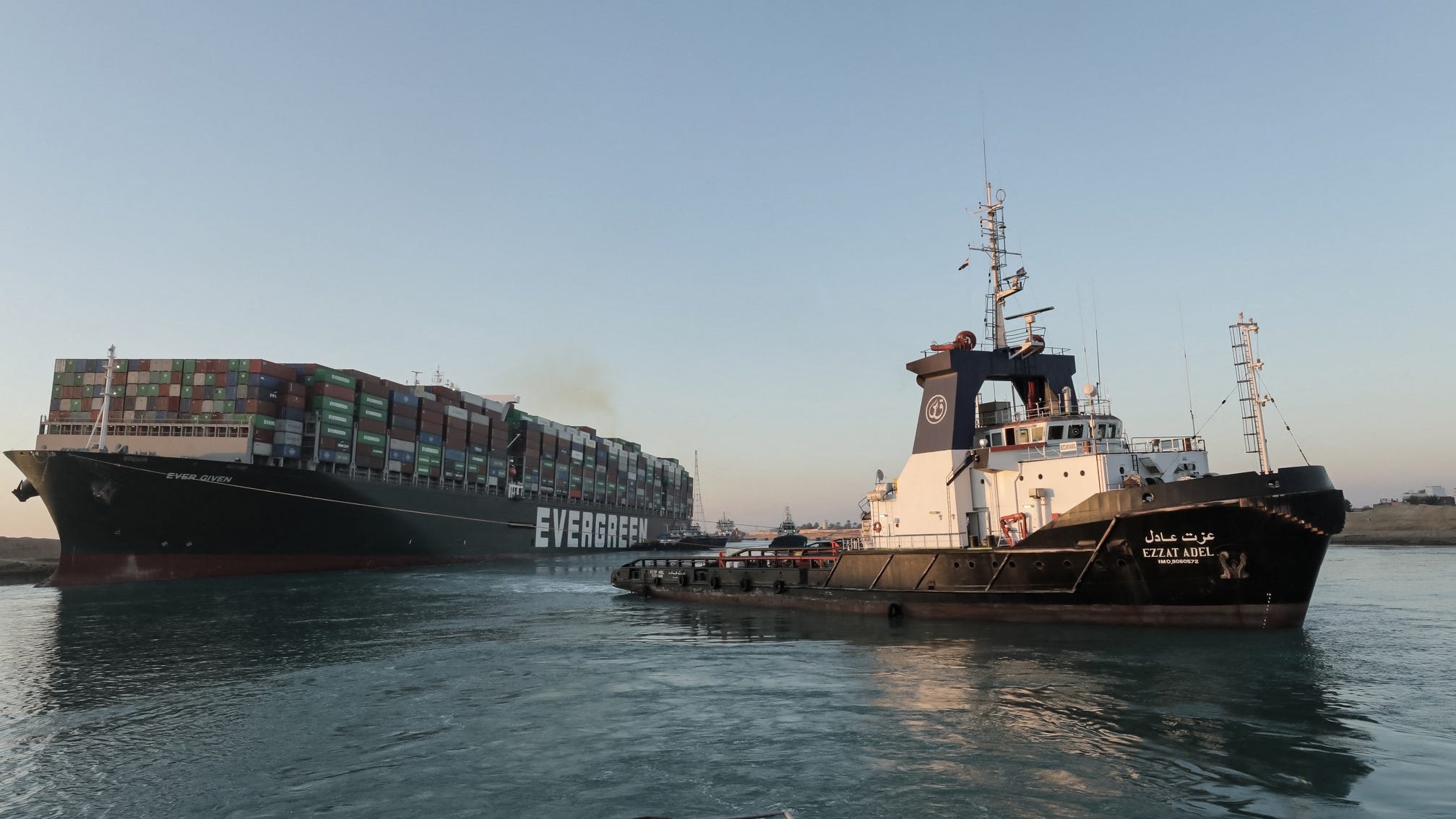
Tugboats left before ship reached Baltimore bridge. They might have saved it.
Key bridge collapse could serve as a wake-up call for the fast-changing shipping industry and its ever-larger vessels
www.usatoday.com
Baltimore port specializes in heavy shipping and Ro/Ro (Roll-on Roll-off) Windmill turbines can come through Baltimore. Next closest place is New Orleans. Military has its own shipping but will also use commercial and Baltimore can handle that.
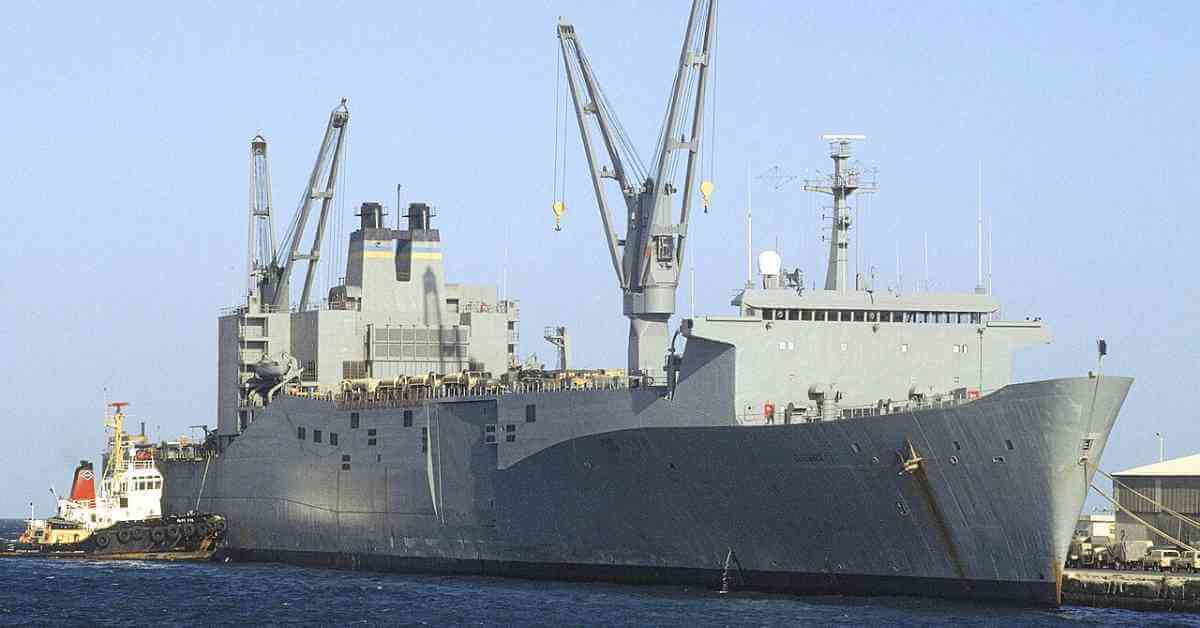
Two Of The Fastest U.S. Military Cargo Ships Stuck In Baltimore After Francis Scott Key Bridge Collapse
Two of the most advanced military cargo ships in the United States have been stuck in the Baltimore Francis Scott Key Bridge.
Large wind turbines arrive at the Port to provide alternative energy
https://www.washingtonexaminer.com/...ve-at-the-port-to-provide-alternative-energy/
Last edited:
I'm not a merchant marine, but I do know from handling powerboats growing up that losing power absolutely means a loss of steering. Tell me you've never driven a boat without telling me you've never driven a boat.
Also, I have years of experience in a manufacturing/warehousing environment with computer automation and air systems to boot. It can take our crew several excruciating minutes to recover from a full power loss if we lose line power and weren't prepared for it (pole down scenario versus approaching storm scenario). It's chaotic. It's dark. Systems need to be brought up in sequence, and if something didn't gracefully scram during the sudden loss of power it needs to be troubleshot. Everyone needs to know the procedure from muscle memory and everyone needs to fill their role. Much easier said than done, when dealing with transient team members. This crash will rewrite a lot of regulations.
I've never driven a 1000' container ship stacked 150' high.
These ships have redundancy built-in to electrical system - often multiple systems.
If standard power system goes out another system kicks-in quickly.
Sometimes (as I heard pro explain) if there is an electrical issue that can't be located the standard power will be shut intentionally so the emergency systems will go on
No bridge is going to survive having one of its two support piers destroyed. The fact the bridge dropped after the support pier collapsed isn't a design flaw and you can't design a bridge that would survive that(at least one that we could afford to build). The fact that the ship was able to destroy the support pier could be considered a design flaw, but only in the context that the protection wasn't upgraded after its original design and construction to keep up with the increased risk factors.After seeing how quick and complete the bridge collapsed due to lack of safety redundancy in it's design and hearing there's over 6,000 bridges nationwide with the same issues, you know the bad guys took notice.
Now there were a couple of approach spans on the far side from the collapsed pier that also fell when the main truss bridge went down. These likely should not have done that as they should be structurally isolated from the truss section. There may be some lessons learned from that.
Syracuse fans?After seeing how quick and complete the bridge collapsed due to lack of safety redundancy in it's design and hearing there's over 6,000 bridges nationwide with the same issues, you know the bad guys took notice.
https://www.msn.com/en-us/news/us/l...-to-help-protect-baltimore-bridge/ar-BB1kGoruNo bridge is going to survive having one of its two support piers destroyed. The fact the bridge dropped after the support pier collapsed isn't a design flaw and you can't design a bridge that would survive that(at least one that we could afford to build). The fact that the ship was able to destroy the support pier could be considered a design flaw, but only in the context that the protection wasn't upgraded after its original design and construction to keep up with the increased risk factors.
Now there were a couple of approach spans on the far side from the collapsed pier that also fell when the main truss bridge went down. These likely should not have done that as they should be structurally isolated from the truss section. There may be some lessons learned from that.
I guess going forward, this should be a no brainer. Gonna cost big time so might as well get started at the huge ports.


No one’s blaming global warming? Pretty obvious
Probably wouldn’t have stopped itI guess going forward, this should be a no brainer. Gonna cost big time so might as well get started at the huge ports.
In maritime speak this is known as an allision not a collision
I blame sex.No one’s blaming global warming? Pretty obvious
Its as relevant as FBI saying for months that infrastructure was in danger of being hacked.
You're just missing a gear.
"I get a lot of objections from ships captains when discussing security flaws in ships, so I felt it worthwhile looking at these in some detail.
The usual response is ‘ships can’t be hacked.’ When I dig further, what they usually seem to mean is that ‘processes aboard the bridge mean that the captain or officers will spot the issue and take manual control’
This implies several important issues:
I’ve been working in IT security for over 20 years. I see the same pattern when security flaws are discovered in an industry for the first time. Back the early 2000’s, few industries outside financial services and government took security seriously. ‘Why would hackers be interested in us’ was the usual objection."
- That the hack is detectable by a ships crew.
- That the crew are actively comparing digital navigation aids with manual navigation techniques (e.g. looking out of the bridge windows!)
- That the manual controls are actually usable and haven’t been hacked themselves
- That there are offline backup systems in the event that primary aids aren’t available (e.g. paper charts)
- That anyone actually checked the digital systems are reporting correctly
Ships can’t be hacked. Wrong | Pen Test Partners
I get a lot of objections from ships captains when discussing security flaws in ships, so I felt it worthwhile looking at these in some detail. The usual response is ‘ships can’t be hacked.’ When I dig further, what they usually seem to mean is that ‘processes aboard the bridge mean that the captain orwww.pentestpartners.com
70% of coal export goes through Baltimore - and its got the greatest volume of auto-shipping.
Very strategic

FACT SHEET: Biden-Harris Administration Announces Initiative to Bolster Cybersecurity of U.S. Ports | The White House
Today, the Biden-Harris Administration will issue an Executive Order to bolster the security of the nation’s ports, alongside a series of additional actions that will strengthen maritime cybersecurity, fortify our supply chains and strengthen the United States industrial base. The Administration...
From the Government Fact Sheet:
"Now, the U.S. Coast Guard will have the express authority to respond to malicious cyber activity in the nation’s MTS by requiring vessels and waterfront facilities to mitigate cyber conditions that may endanger the safety of a vessel, facility, or harbor"
That paragraph clearly states "vessels"
Similar threads
- Replies
- 240
- Views
- 4K
- Replies
- 28
- Views
- 1K
ADVERTISEMENT
ADVERTISEMENT


